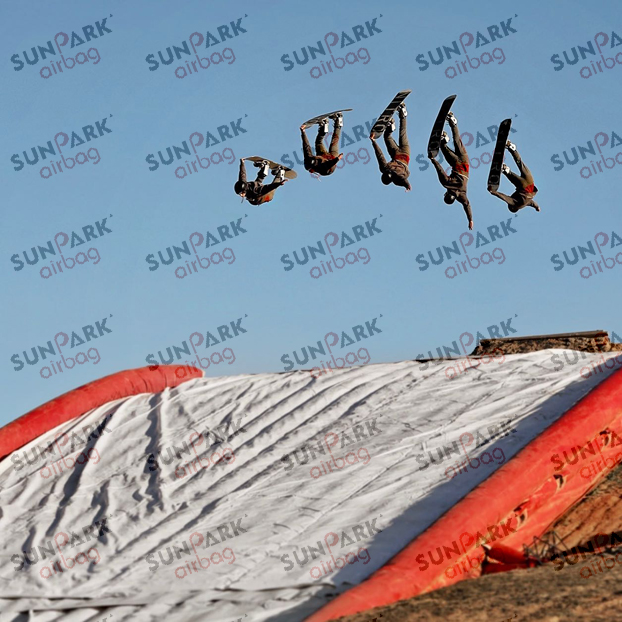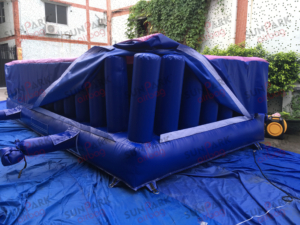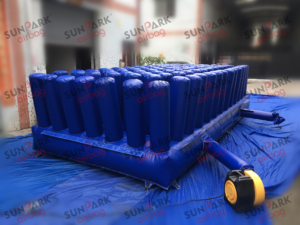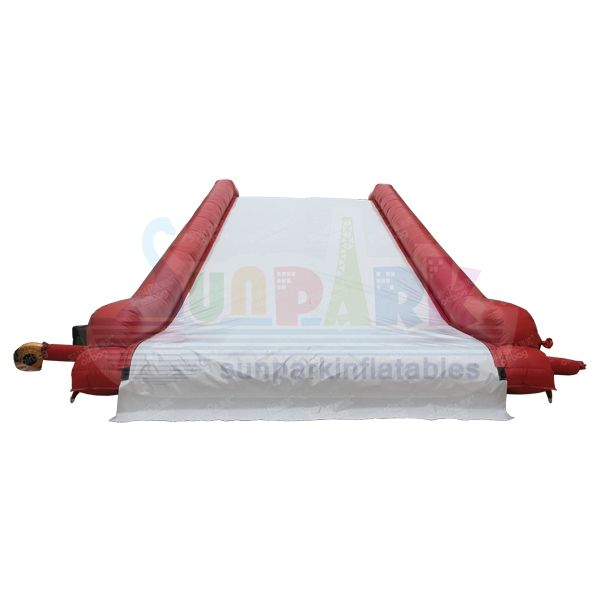How Airbag Landing Systems are Transforming Safety Standards in Extreme Sports
Extreme sports have always pushed the boundaries of human capability, offering adrenaline seekers thrilling experiences that often come with inherent risks. As the popularity of these high-octane activities grows, so does the urgency for improved safety measures.
Enter airbag landing systems—innovative solutions that are revolutionizing how athletes approach safety in the air. In this article, we’ll explore how airbag landing systems work, their impact on injury rates, and the future of safety in extreme sports, highlighting the remarkable strides being made to protect athletes while they pursue their passion for adventure.
What Are Airbag Landing Systems?
Airbag landing systems are advanced safety technologies designed to reduce the impact force experienced by athletes during falls or landings in extreme sports. These systems are designed to cushion landings in action sports. They are essential for various extreme sports, including:
- Skiing and snowboarding
- BMX and skateboarding
- Trampolining
- Freestyle motocross
- Base jumping
- Parkour
- Gymnastics
- Stunt work in film and television
Key Features Of Airbag Landing Systems
Airbag landing systems offer a range of innovative features designed to enhance athlete safety and performance in extreme sports. Here are some of the key features that set these systems apart:
1. Multi-Chamber Design
- Dual Chamber Design: This system features two layered chambers with multiple air pockets. The upper chamber provides a soft landing surface, while the lower chamber offers a firm base for added stability.
- Enhanced Safety for Progression: With a realistic landing angle, this mountain bike landing airbag serves as the perfect training tool for skiers, snowboarders, mountain bikers, and BMX riders. It allows athletes to advance their skills quickly while minimizing the risk of injury!
2. Energy Absorption Technology
- Impact Reduction: The primary function of an MTB airbag is to absorb impact forces effectively. The airbag’s structure compresses upon landing, dissipating kinetic energy and significantly reducing the force transferred to the athlete’s body.
- Layered Design: Some systems feature multiple layers of inflatable bladders, enhancing their ability to absorb energy and providing varying levels of cushioning for different types of landings.
3. Customizable Pressure Settings
- Variable air blower positioning: Many airbag landing systems allow users to adjust the inflation pressure based on the athlete’s weight and the type of landing. For instance, in the gymnastics air pit, the variable air blower positioning ensures optimal performance and safety for different users and scenarios.
- Variable Firmness: By altering the air pressure, athletes can choose a firmer or softer landing surface, accommodating their personal preferences and the specific requirements of their sport.
4. Portable and Lightweight Design
- Easy Transportation: Airbags are typically designed to be lightweight and compact, making them easy to transport to various locations. This portability allows athletes to set up safety measures wherever they practice or compete.
- Quick Setup: The systems can be inflated and deflated quickly, facilitating rapid deployment at events or training sessions without requiring extensive setup time. For instance, the landing crash pad is very easy to set up.
5. Durable Materials
- Resilient Construction: Airbags are often made from high-strength materials (PVC Tarpaulin) that can withstand rough landings and outdoor conditions. These durable materials ensure the longevity and reliability of the system, even with frequent use.
- Weather Resistance: Many airbag landing systems are designed to be weather-resistant, allowing them to be used in various environments without compromising performance.
6. User-Friendly Design
- Intuitive Operation: Airbag landing systems are typically designed with user-friendly controls (adjustable air vents), making it easy for athletes and trainers to operate them without extensive training.
- Clear Instructions: Most systems come with straightforward instructions for setup, inflation, and maintenance, ensuring users can efficiently manage the equipment.
7. Versatility
- Adaptable Use: Airbag landing systems can be used in a variety of extreme sports, from snowboarding and skiing to BMX riding and parkour, making them a versatile tool for enhancing safety across multiple disciplines.
- Customizable Landing Zones: Some systems allow users to create different landing zone shapes or configurations, tailoring the setup to specific stunts or jumps, further increasing safety and usability.
Why Airbag Landing Systems Are Important For Extreme Sports
Airbag landing systems are becoming increasingly vital for ensuring safety across various high-impact activities and environments. These systems are suitable for a range of facilities that offer extreme sports, including ski resorts, theme parks, action sports facilities, and gymnastic facilities. Here’s why airbag landing systems are essential for extreme sports and these specific facilities:
Enhanced Athlete Safety
Injury prevention is one of the primary benefits of airbag landing systems. They significantly reduce the risk of injury during falls, as the cushioning effect provided by the airbag absorbs impact forces. This makes it safer for athletes to attempt high-risk maneuvers. Knowing that a reliable safety system is in place allows athletes to push their limits without the constant fear of injury, boosting their confidence and leading to improved performance.
Cost-Effectiveness
By minimizing the risk of injuries, airbag landing systems can lead to lower medical costs for athletes and facilities. This cost-effectiveness makes them an attractive investment for action sports venues and training facilities. Enhanced safety can also encourage more participants to engage in extreme sports; as more athletes feel secure in their environment, facilities can benefit from increased attendance and participation rates.
Improved Training Opportunities
Airbag landing systems provide a controlled and safe environment for athletes to practice new skills and techniques. This safety system allows them to experiment without the fear of serious injuries, facilitating quicker skill development. Facilities like gymnastics centers and action sports parks can utilize airbag systems to conduct professional training sessions, helping athletes prepare for competitions in a safe and effective manner.
Positive Impact on Event Production
In film and television productions, airbag landing systems contribute to higher-quality stunts by allowing stunt performers to execute more daring maneuvers safely. This results in visually stunning action sequences that captivate audiences. Additionally, integrating airbag systems can reduce the risks associated with stunt work, leading to smoother and more efficient production processes.
Compliance with Safety Standards
Many facilities are required to adhere to specific safety standards and regulations. Airbag landing systems can help meet these requirements, ensuring that venues remain compliant while prioritizing athlete safety. As extreme sports continue to grow in popularity, the demand for safety innovations will increase. Utilizing airbag landing systems sets a standard for safety that can benefit the entire industry.
Wrap-Up!
Airbag landing systems are revolutionizing safety in extreme sports across facilities like ski resorts, theme parks, action sports venues, gymnastics centers, and film productions. They enhance athlete safety, offer versatility for various activities, and are cost-effective, encouraging greater participation and improving training.
Additionally, these systems elevate stunt quality in film and television, allowing athletes to perform daring maneuvers with confidence. As extreme sports continue to grow, embracing airbag landing systems will be crucial for ensuring a safer and more dynamic environment for all participants.
























 Landing Airbag (1)
Landing Airbag (1) Olympic Size Landing Airbag (2)
Olympic Size Landing Airbag (2) Snowboard Airbag (3)
Snowboard Airbag (3) Snowboarding Airbag (2)
Snowboarding Airbag (2)











